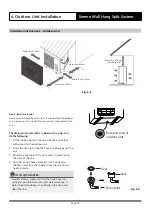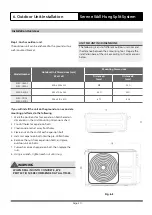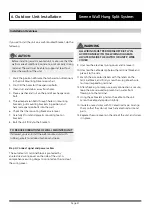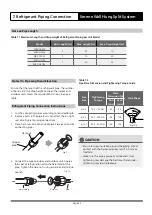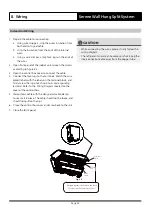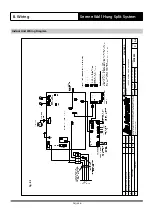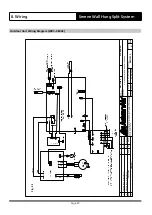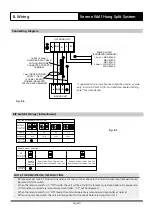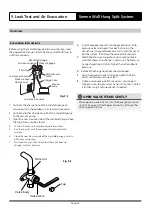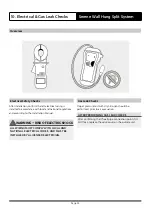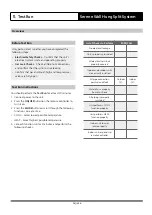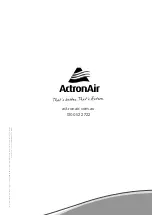
Page 33
Evacuation Instructions
Evacuation Instructions
Before using the manifold gauge and vacuum pump, read
their operation manuals to familiarize yourself with how to
use them properly.
Manifold Gauge
Compound gauge
-76cmHg
Low pressure valve
High pressure
valve
Pressure hose /
Charge hose
Charge hose
Vacuum
pump
Pressure gauge
Low pressure valve
1. Connect the charge hose of the manifold gauge to
service port on the outdoor unit’s low pressure valve.
2. Connect another charge hose from the manifold gauge
to the vacuum pump.
3. Open the Low Pressure side of the manifold gauge. Keep
the High Pressure side closed.
4.
Turn on the vacuum pump to evacuate the system.
5.
Run the vacuum until the compound meter reads 500
microns.
6.
Close the Low Pressure side of the manifold gauge, and turn
off the vacuum pump.
7.
Wait for 5 minutes, then check that there has been no
change in system pressure.
Flare nut
Cap
Valve body
Valve stem
Fig. 9.2
9. Leak Test and Air Evacuation
Serene Wall Hung Split System
Overview
OPEN VALVE STEMS GENTLY
When opening valve stems, turn the hexagonal wrench
until it hits against the stopper. Do not try to force the
valve to open further.
Fig. 9.3
8. Insert hexagonal wrench into the packed valve (high
pressure valve) and open the valve by turning the
wrench in a 1/4 counterclockwise turn. Listen for gas to
exit the system, then close the valve after 5 seconds.
9. Watch the Pressure Gauge for one minute to make
sure that there is no change in pressure. The Pressure
Gauge should read slightly higher than atmospheric
pressure.
10. Remove the charge hose from the service port.
11. Using hexagonal wrench, fully open both the high
pressure and low pressure valves.
12. Tighten valve caps on all three valves (service port,
high pressure, low pressure) by hand. You may tighten
it further using a torque wrench if needed.

